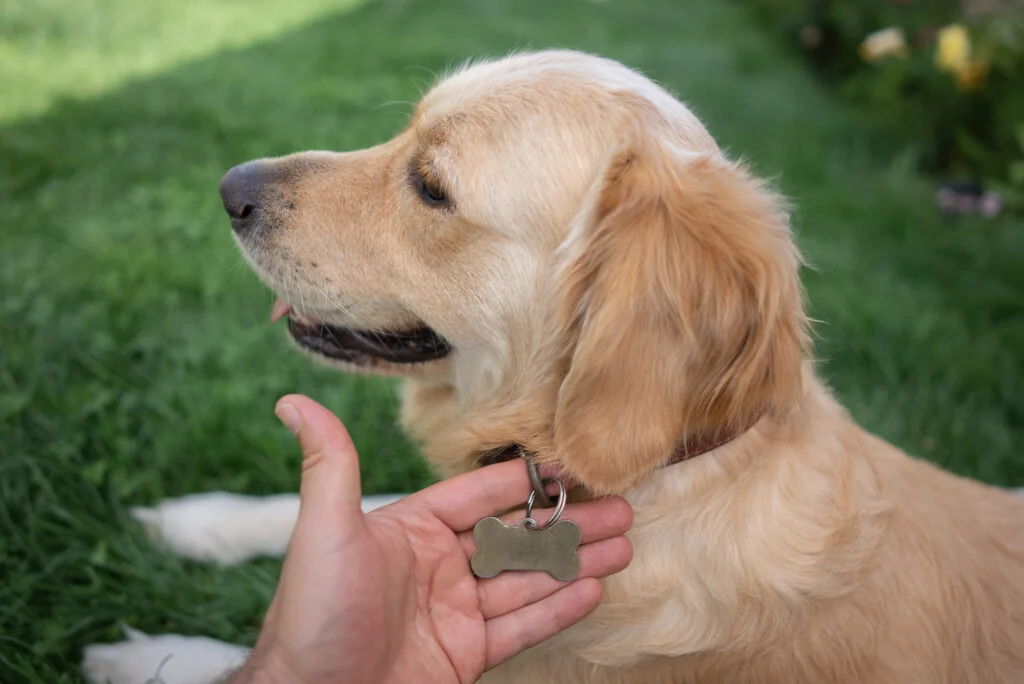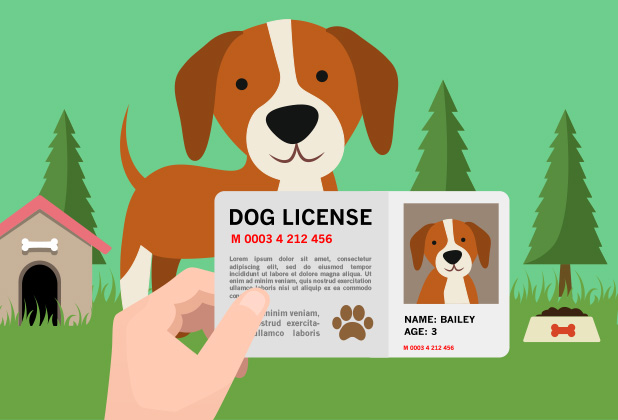Ensuring the safety of your pets is a top priority for any responsible pet owner. One of the most essential yet often overlooked aspects of pet care is proper identification. Whether your furry friend is a curious cat prone to wandering or a playful dog that loves outdoor adventures, having a reliable identification system in place is crucial. This not only helps prevent your pet from getting lost but also increases the chances of being reunited if they are separated from you.
Proper pet identification involves more than just an aesthetic collar. While a collar with an ID tag is a great starting point, adding an extra layer of protection, such as microchipping, provides invaluable peace of mind. Let’s explore why ID tags and microchips are essential for pet safety and how they work together to keep your pets safe.
Why Every Pet Needs an ID Tag
An ID tag is the first line of defense when it comes to ensuring the safe return of your pet. It’s a visible, easy-to-read identifier that gives anyone who finds your lost pet immediate access to your contact details. Think of it as your pet’s personal “name tag” with vital information.
It’s important to make sure that your pet’s ID tag includes basic yet crucial details. The tag should feature:
- Your pet’s name
- Your phone number (preferably two contact numbers)
- Your address (optional but useful in case someone nearby finds your pet)
- Any essential medical information (like allergies)
When your pet has an ID tag, even a neighbor or passerby can easily identify and contact you to return your pet. A pet without identification, however, risks being mistaken for a stray or being handed over to animal control, which can delay the reunification process.
The Importance of Microchipping Your Pet
While collars and ID tags are necessary, they aren’t foolproof. Pets can easily lose collars while playing, running, or squeezing through tight spaces. That’s where microchipping steps in to provide an extra layer of security.
A microchip is a tiny electronic device, about the size of a grain of rice, that is implanted under your pet’s skin, typically around the shoulder blades. Unlike an ID tag that can be removed or fall off, a microchip stays with your pet for life. It contains a unique identification number that, when scanned by a veterinarian or animal shelter, links to your contact information stored in a national pet recovery database.
One of the biggest benefits of microchipping is that it significantly increases the chances of recovering lost pets. In fact, studies show that microchipped pets are 2.5 times more likely to be reunited with their owners than those without a microchip. Additionally, many shelters and rescue organizations automatically scan incoming animals for microchips, ensuring that even if a pet is found without a collar, they can still be traced back to their owner.
The Microchipping Process: What to Expect
If you’ve never had your pet microchipped before, you may be wondering what the procedure entails. Fortunately, it’s a simple and quick process that can be done during a routine veterinary visit. The microchip is inserted under the skin using a special syringe, and the entire procedure takes just a few seconds. Most pets experience little to no discomfort, and it doesn’t require anesthesia.
Once the chip is implanted, your responsibility as a pet owner is to register the microchip with your contact information. This is a critical step that many people overlook. A microchip is only useful if the information linked to it is accurate and up-to-date. Make sure to update your contact details if you move or change phone numbers.
How ID Tags and Microchips Work Together
Many pet owners assume that if their pet has a microchip, they don’t need an ID tag—or vice versa. However, using both forms of identification together offers the best protection for your pet.
An ID tag provides an immediate way for someone to reach you without requiring special equipment. If a neighbor or passerby finds your pet, they can easily read the tag and contact you directly. On the other hand, a microchip is a permanent solution that guarantees identification even if the collar is lost.
The key takeaway is that both methods complement each other. While an ID tag is more convenient for everyday use, a microchip offers a fail-safe option that ensures your pet always has some form of identification, regardless of circumstances.
Keeping Your Pet’s Identification Updated
It’s not enough to simply get your pet an ID tag and microchip—you need to ensure that the information is current. Here are some tips to keep your pet’s identification up to date:
- Regularly check your pet’s ID tag for wear and tear. If the engraving becomes unreadable, replace it immediately.
- Update your contact details on the ID tag and microchip registry whenever you move or change phone numbers.
- Ensure your pet’s ID tag is securely fastened to their collar.
- For microchips, log into the recovery database at least once a year to confirm that your information is still accurate.
By keeping both your pet’s ID tag and microchip information updated, you can greatly increase the chances of being reunited with your pet should they ever get lost.
Choosing the Right ID Tag for Your Pet
Not all ID tags are created equal. When selecting an ID tag for your pet, consider the following:
- Material: Choose a durable material such as stainless steel or brass that can withstand the elements and your pet’s daily activities.
- Size: The tag should be large enough to include all necessary information but not so big that it becomes uncomfortable for your pet.
- Engraving: Ensure the engraving is deep and legible. Some tags offer laser engraving, which can fade over time, so look for etched or stamped options that will last longer.
- Fastening Mechanism: Choose a secure method to attach the tag to your pet’s collar, such as a split ring or quick-release clasp.
There are also customizable tags that can feature your pet’s name in fun fonts or designs, but remember that functionality should always come before aesthetics.
How to Ensure Your Pet’s Collar Fits Properly
While collars and ID tags are important, it’s equally crucial to ensure that your pet’s collar fits properly. A poorly fitted collar can cause discomfort or even injury to your pet. Here are some tips to make sure your pet’s collar is just right:
- Snug but not tight: You should be able to slip two fingers between the collar and your pet’s neck. If it’s too loose, your pet may be able to slip out of it; too tight, and it could cause breathing issues or irritation.
- Adjustability: Choose a collar with an adjustable strap to accommodate your pet’s growth or seasonal changes in coat thickness.
- Material: Look for a collar made from durable yet comfortable materials such as nylon or leather. Ensure there are no sharp edges or embellishments that could irritate your pet’s skin.
By ensuring that your pet’s collar fits properly, you can prevent discomfort and keep the ID tag in place.
The Role of Animal Shelters and Lost Pet Recovery Services
Animal shelters and lost pet recovery services play a critical role in reuniting lost pets with their owners. Many shelters are equipped with microchip scanners and actively participate in national pet recovery databases. This means that if a lost pet is brought to the shelter, the staff will scan for a microchip and check for ID tags to quickly contact the owner.
It’s also worth noting that some recovery services offer additional features, such as lost pet alerts and pet ID cards, which can help speed up the recovery process. These services often come with the microchip registration, so take advantage of any extras provided to increase your chances of finding your pet.
Conclusion
Keeping your pets safe with proper identification is a simple yet effective way to ensure they are quickly reunited with you if lost. By using a combination of ID tags and microchips, you provide both immediate and long-term protection for your beloved pet. Regularly updating your contact information and ensuring that your pet’s collar fits properly further boosts their safety.
Don’t wait until it’s too late—equip your pets with proper identification today, and enjoy the peace of mind that comes with knowing they can always find their way back to you.




